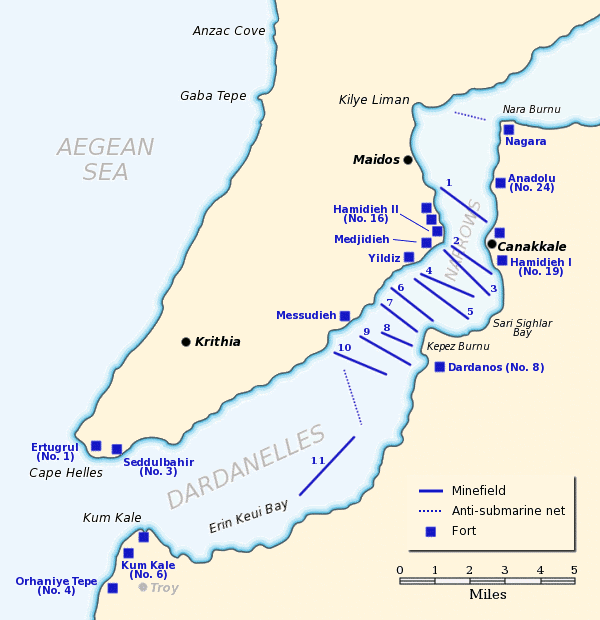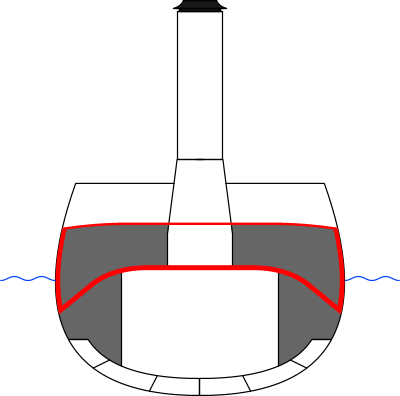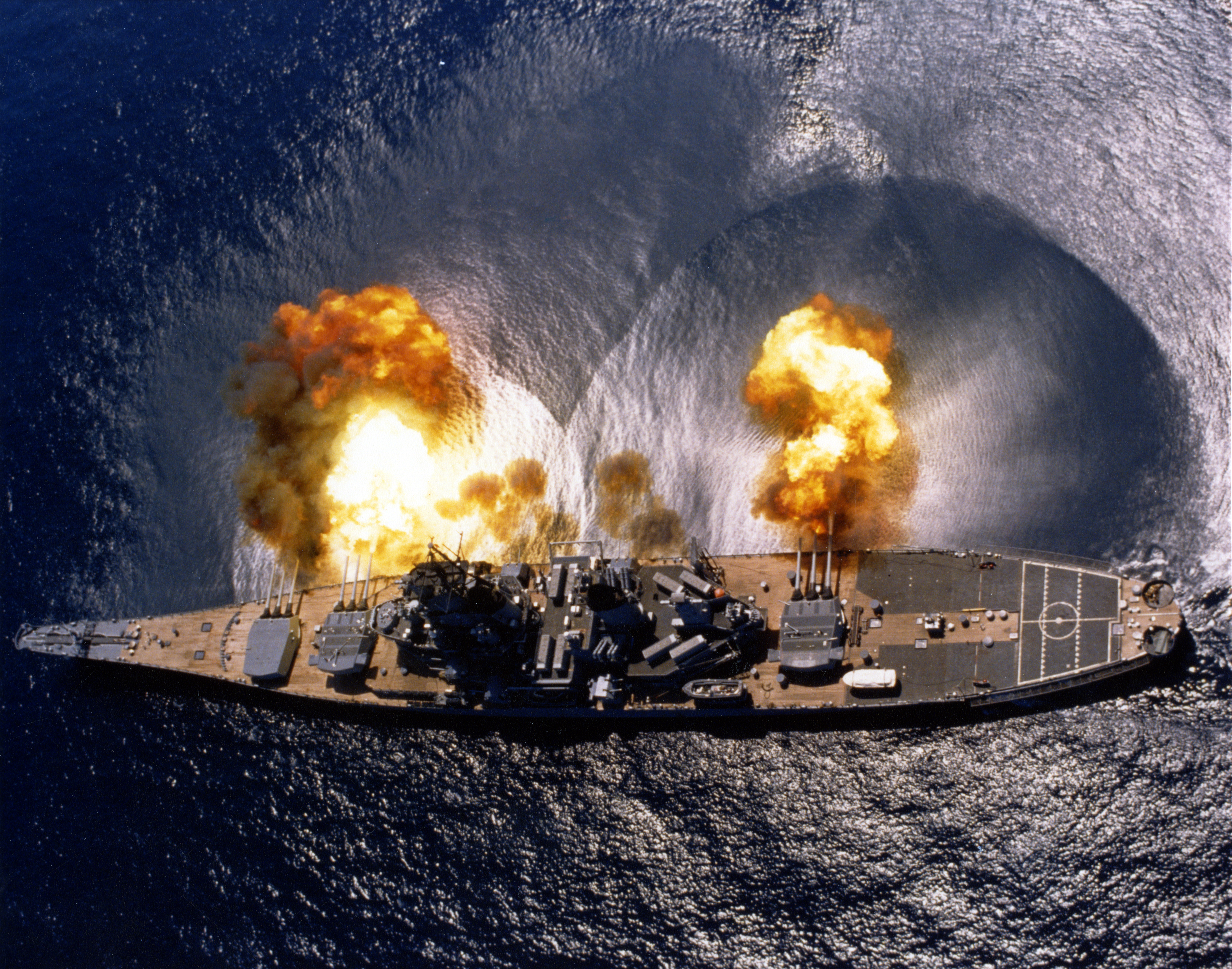|
BL 9.2 Inch Mk XI Naval Gun
The BL 9.2-inch Mark XI gunMark XI = Mark 11. Britain use Roman numerals to denote Marks (models) of ordnance until after World War II. Hence this was the eleventh model of BL 9.2-inch gun. was a British 50 Caliber#Caliber as measurement of length, calibre high-velocity naval artillery, naval gun which was mounted as primary armament on armoured cruisers and secondary armament on pre-dreadnought battleships. History The gun with its increased length of 50 calibres was an attempt to extract a higher velocity, and hence more range and armour-piercing capability, from the BL 9.2-inch Mk IX–X naval gun, 9.2-inch gun. Like other British 50-calibre guns of the period, it was relatively unsuccessful and was the last model of 9.2-inch gun Britain built. Guns were mounted in the following ships : * Minotaur-class cruiser (1906), ''Minotaur''-class armoured cruisers laid down 1905 & completed 1908–1909: 2 twin mounts. * Lord Nelson-class battleship, ''Lord Nelson''-class battleships ... [...More Info...] [...Related Items...] OR: [Wikipedia] [Google] [Baidu] |
HMS Agamemnon (1906)
HMS ''Agamemnon'' was one of two pre-dreadnought battleships launched in 1906 and completed in 1908. She was the Royal Navy's second-to-last pre-dreadnought battleship to be built, followed by her sister ship, . She was assigned to the Channel Fleet when the First World War began in 1914. The ship was transferred to the Mediterranean Sea with ''Lord Nelson'' in early 1915 to participate in the Naval operations in the Dardanelles Campaign, Dardanelles Campaign. She made a number of bombardments against Turkish fortifications and in support of British troops. ''Agamemnon'' remained in the Mediterranean after the conclusion of that campaign to prevent the German battlecruiser and light cruiser from breaking out into the Mediterranean. ''Agamemnon'' shot down the German Zeppelin LZ 55, Zeppelin ''LZ-55'' (''LZ-85'') during a bombing mission over Thessaloniki, Salonica in 1916. On 30 October 1918, the Ottoman Empire signed the Armistice of Mudros on board the ship while she was an ... [...More Info...] [...Related Items...] OR: [Wikipedia] [Google] [Baidu] |
Armoured Cruiser
The armored cruiser was a type of warship of the late 19th and early 20th centuries. It was designed like other types of cruisers to operate as a long-range, independent warship, capable of defeating any ship apart from a pre-dreadnought battleship and fast enough to outrun any battleship it encountered. For many decades, naval technology had not advanced far enough for designers to produce a cruiser that combined an armored belt with the long-range and high speed required to fulfill its mission. For this reason, beginning in the 1880s and 1890s, many navies preferred to build protected cruisers, which only relied on a lightly armored deck (ship), deck to protect the vital parts of the ship. However, by the late 1880s, the development of modern rapid-fire breech-loading cannons and high-explosive shells made the reintroduction of side armor a necessity. The invention of Case-hardening, case-hardened armor in the mid-1890s offered effective protection with less weight than previou ... [...More Info...] [...Related Items...] OR: [Wikipedia] [Google] [Baidu] |
Naval Guns Of The United Kingdom
A navy, naval force, military maritime fleet, war navy, or maritime force is the branch of a nation's armed forces principally designated for naval and amphibious warfare; namely, lake-borne, riverine, littoral, or ocean-borne combat operations and related functions. It includes anything conducted by surface ships, amphibious ships, submarines, and seaborne aviation, as well as ancillary support, communications, training, and other fields. The strategic offensive role of a navy is projection of force into areas beyond a country's shores (for example, to protect sea-lanes, deter or confront piracy, ferry troops, or attack other navies, ports, or shore installations). The strategic defensive purpose of a navy is to frustrate seaborne projection-of-force by enemies. The strategic task of a navy also may incorporate nuclear deterrence by use of submarine-launched ballistic missiles. Naval operations can be broadly divided between riverine and littoral applications (brown-water nav ... [...More Info...] [...Related Items...] OR: [Wikipedia] [Google] [Baidu] |
List Of Naval Guns ...
List of Naval Guns by country of origin List of naval guns by caliber size Naval anti-aircraft guns See also *List of artillery * List of the largest cannon by caliber *Glossary of British ordnance terms *Naval artillery References External links NAVWEAPS – Naval weapons of the world, 1880 to today(retrieved 2010-02-01) {{Military and war Naval A navy, naval force, military maritime fleet, war navy, or maritime force is the branch of a nation's armed forces principally designated for naval and amphibious warfare; namely, lake-borne, riverine, littoral, or ocean-borne combat operatio ... [...More Info...] [...Related Items...] OR: [Wikipedia] [Google] [Baidu] |
Roberts-class Monitor
The ''Roberts'' class of monitors of the Royal Navy consisted of two heavily gunned vessels built during the Second World War. They were the ''Roberts'', completed in 1941, and ''Abercrombie'', completed in 1943. Features of the class were two 15-inch guns in a twin turret, shallow draught for operating inshore, broad beam to give stability (and also resistance to torpedoes and mines) and a high observation platform to observe fall of shot. Ships *: Reused the turret of the World War I monitor ''Marshal Soult''. ''Roberts'' provided bombardment support during Operation Torch in North Africa, where she was damaged by two 500 kg bombs. She was repaired in time to support the Allied invasion of Sicily, landings near Salerno, invasion of Normandy, and landing at Westkapelle. :One of ''Roberts guns (formerly in HMS ''Resolution'') is mounted outside the Imperial War Museum in Lambeth, South London, together with one from the battleship ''Ramillies''. ''Roberts'' her ... [...More Info...] [...Related Items...] OR: [Wikipedia] [Google] [Baidu] |
Lord Nelson-class Battleship
The ''Lord Nelson'' class consisted of a pair of pre-dreadnought battleships built for the Royal Navy in the first decade of the twentieth century. Although they were the last British pre-dreadnoughts, both were completed and commissioned well over a year after had entered service in late 1906. and were assigned to the Home Fleet when completed in 1908, with the former ship often serving as a flagship. The sister ships were transferred to the Channel Fleet when the First World War began in August 1914. They were transferred to the Mediterranean Sea in early 1915 to participate in the Dardanelles Campaign. They remained there after the end of that campaign in 1916 and were assigned to the Eastern Mediterranean Squadron, which was later redesignated the Aegean Squadron, to prevent the ex-German battlecruiser and her consort, the light cruiser , from breaking out into the Mediterranean from the Dardanelles, although neither ship was present when the German ships made that at ... [...More Info...] [...Related Items...] OR: [Wikipedia] [Google] [Baidu] |
Minotaur-class Cruiser (1906)
The ''Minotaur'' class was a three-ship class of armoured cruisers built in the first decade of the twentieth century for the Royal Navy. These were the last class of armoured cruisers built for the Royal Navy, with that role being substantially replaced by the first battlecruisers. These initially served with the Home Fleet, generally as the flagships of cruiser squadrons. ''Minotaur'' became flagship of the China Station in 1910 and ''Defence'' served as flagship of the 1st Cruiser Squadron in the Mediterranean from 1912; ''Shannon'' remained at home as flagship of several different squadrons. When World War I began in August 1914, ''Defence'' participated in the pursuit of the German ships and and ''Minotaur'' hunted for the German East Asia Squadron and German commerce raiders in the Pacific and Indian Oceans. ''Shannon'' remained with the Grand Fleet, as the Home Fleet was renamed, for the entire war. All three were present at the Battle of Jutland in May 1916, wher ... [...More Info...] [...Related Items...] OR: [Wikipedia] [Google] [Baidu] |
BL 9
BL (or similar) may refer to: Arts and entertainment * Boys' love, a Japanese term for fiction featuring romantic relationships between male characters * BL Publishing, a division of the wargames manufacturing company, Games Workshop * ''Boston Legal'', a US legal comedy-drama Businesses and organizations * Balmer Lawrie, an Indian central public sector undertaking conglomerate * Bell Labs, an audio-technology research and design enterprise * Boys' Latin School of Maryland, a US private school * Brisbane Lions, an Australian rules football team in the Australian Football League * British Library, the UK's national library * British Leyland, a former UK vehicle manufacturing company * Pacific Airlines (IATA code BL), a low-cost airline * Lytvyn Bloc, a Ukrainian political party Food and drink * Bitter lemon, a carbonated soft drink * Bud Light, an American lager beer Law * Bachelor of Laws (B.L.), an undergraduate degree in law * Barrister-at-Law, a degree and professional ... [...More Info...] [...Related Items...] OR: [Wikipedia] [Google] [Baidu] |
Pre-dreadnought Battleship
Pre-dreadnought battleships were sea-going battleships built from the mid- to late- 1880s to the early 1900s. Their designs were conceived before the appearance of in 1906 and their classification as "pre-dreadnought" is retrospectively applied. In their day, they were simply known as "battleships" or else more rank-specific terms such as "first-class battleship" and so forth. The pre-dreadnought battleships were the pre-eminent warships of their time and replaced the ironclad warship, ironclad battleships of the 1870s and 1880s. In contrast to the multifarious development of ironclads in preceding decades, the 1890s saw navies worldwide start to build battleships to a common design as dozens of ships essentially followed the design of the Royal Navy's . Built from steel, protected by compound armour, compound, nickel steel or case-hardening, case-hardened steel armor, pre-dreadnought battleships were driven by coal-fired boilers powering triple-expansion steam engine, compou ... [...More Info...] [...Related Items...] OR: [Wikipedia] [Google] [Baidu] |
Naval Artillery
Naval artillery is artillery mounted on a warship, originally used only for naval warfare and then subsequently used for more specialized roles in surface warfare such as naval gunfire support (NGFS) and anti-aircraft warfare (AAW) engagements. The term generally refers to powder-launched projectile-firing weapons and excludes self-propelled projectiles such as torpedoes, rockets, and missiles and those simply dropped overboard such as depth charges and naval mines. Origins The idea of ship-borne artillery dates back to the classical era. Julius Caesar wrote about the Roman navy's usage of ship-borne catapults against Celtic Britons ashore in his ''Commentarii de Bello Gallico''. The dromons of the Byzantine Empire carried catapults and Greek fire. From the Middle Ages onwards, warships began to carry cannons of various calibres. In the Battle of Tangdao in 1161, the Southern Song general Li Bao used huopao (a type of gunpowder weapons, possibly cannons) and fire arro ... [...More Info...] [...Related Items...] OR: [Wikipedia] [Google] [Baidu] |
Ottoman Empire
The Ottoman Empire (), also called the Turkish Empire, was an empire, imperial realm that controlled much of Southeast Europe, West Asia, and North Africa from the 14th to early 20th centuries; it also controlled parts of southeastern Central Europe, between the early 16th and early 18th centuries. The empire emerged from a Anatolian beyliks, ''beylik'', or principality, founded in northwestern Anatolia in by the Turkoman (ethnonym), Turkoman tribal leader Osman I. His successors Ottoman wars in Europe, conquered much of Anatolia and expanded into the Balkans by the mid-14th century, transforming their petty kingdom into a transcontinental empire. The Ottomans ended the Byzantine Empire with the Fall of Constantinople, conquest of Constantinople in 1453 by Mehmed II. With its capital at History of Istanbul#Ottoman Empire, Constantinople (modern-day Istanbul) and control over a significant portion of the Mediterranean Basin, the Ottoman Empire was at the centre of interacti ... [...More Info...] [...Related Items...] OR: [Wikipedia] [Google] [Baidu] |
Roman Numerals
Roman numerals are a numeral system that originated in ancient Rome and remained the usual way of writing numbers throughout Europe well into the Late Middle Ages. Numbers are written with combinations of letters from the Latin alphabet, each with a fixed integer value. The modern style uses only these seven: The use of Roman numerals continued long after the Fall of the Western Roman Empire, decline of the Roman Empire. From the 14th century on, Roman numerals began to be replaced by Arabic numerals; however, this process was gradual, and the use of Roman numerals persisted in various places, including on clock face, clock faces. For instance, on the clock of Big Ben (designed in 1852), the hours from 1 to 12 are written as: The notations and can be read as "one less than five" (4) and "one less than ten" (9), although there is a tradition favouring the representation of "4" as "" on Roman numeral clocks. Other common uses include year numbers on monuments and buildin ... [...More Info...] [...Related Items...] OR: [Wikipedia] [Google] [Baidu] |






